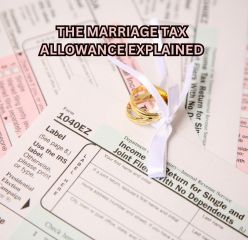So many couples are missing out on Marriage Tax Allowance without even realizing it. It’s basically free money just sitting there, waiting to be claimed. If you’re married or in a civil partnership, it’s definitely worth checking if you qualify. Especially since you can backdate it and save even more.
In this article, I’ll break down exactly how it works, who can get it and how to apply (it’s way easier than you might think).
Let’s get into it!
What is Marriage Tax Allowance?
Marriage Tax Allowance is a tax break in the UK that allows couples to save money by transferring a portion of one partner’s unused personal allowance to the other. It can be especially helpful when one spouse earns significantly less than the other or doesn’t earn at all.
How does Marriage Tax Allowance work?
Each person in the UK has a personal tax-free allowance. That’s the amount you can earn before paying income tax. With Marriage Tax Allowance, if one spouse earns below the personal allowance threshold (currently £12,570), they can transfer up to £1,260 of their allowance to their higher-earning partner. That reduces the amount of tax the higher earner has to pay, leading to potential savings of up to £252 per year.
Example scenario
Let’s say Emma earns £8,000 per year and her husband James earns £30,000. Since Emma’s income is below the personal allowance threshold, she doesn’t pay any income tax. Instead of letting her unused allowance go to waste, she can transfer £1,260 of it to James. This means James gets a higher tax-free threshold, reducing the amount of tax he pays on his earnings and saving them money as a couple.
If you’re not sure how much you could save, using a marriage tax allowance calculator like this can help you quickly figure out your potential tax reduction. It’s a simple way to check whether you qualify and see exactly how much you could get.
Applying for Marriage Tax Allowance is free and can be done online through the HMRC website. It’s a quick process that could lead to valuable savings for married and civil partnership couples.
Who qualifies for Marriage Tax Allowance?
Marriage Tax Allowance is a great way for couples to save on their taxes, but not everyone is eligible. Here’s a pretty clear breakdown of who qualifies and common misconceptions about who doesn’t.
You can apply for Marriage Tax Allowance if…
you’re married or in a civil partnership (cohabiting couples do NOT qualify).
one partner earns below the personal allowance (currently £12,570 for most individuals).
the other partner earns more than the personal allowance, but under the higher-rate tax threshold (currently £50,270 for most individuals).
you’re both in the UK tax system because this allowance is only available to UK residents.
You cannot apply for Marriage Tax Allowance if…
both partners earn above the personal allowance or one partner is earning above the higher-rate tax threshold.
you’re unmarried or not in a civil partnership (living together does not qualify you).
you or your partner are claiming the marriage allowance as part of the Blind Person’s Allowance or Married Couple’s Allowance.
you’re in the income tax band above the basic rate.
Make sure you meet the eligibility criteria before applying for Marriage Tax Allowance to attempt to get the benefits.
How much can you save with Marriage Tax Allowance?
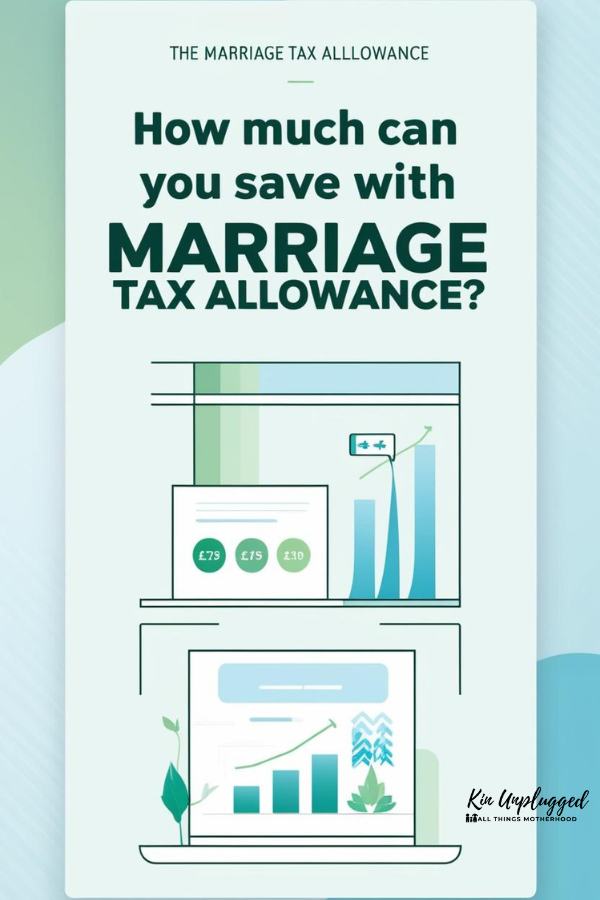
The Marriage Tax Allowance can save you quite a bit if you meet the eligibility criteria. The amount you can save depends on your income levels and the tax year you’re applying for. Here’s a breakdown of just how much you could save.
Potential savings by tax year
| Tax Year | Max savings per year |
| 2023/24 | £1,260 |
| 2022/23 | £1,260 |
| 2021/22 | £1,220 |
| 2020/21 | £1,190 |
| 2019/20 | £1,188 |
Backdating your savings
One of the great benefits of the Marriage Tax Allowance is that you can backdate your claim for up to 4 years if you were eligible during those years but never applied. So if you’ve missed out on any of the previous tax years, you could claim up to £5,040 in total savings!
How to save even more
Ready to see exactly how much you could save? Use this Marriage Tax Allowance calculator or just go ahead and apply for marriage tax allowance directly through HMRC’s website to get a quick estimate of your potential refund.
How to apply for Marriage Tax Allowance (step-by-step guide)
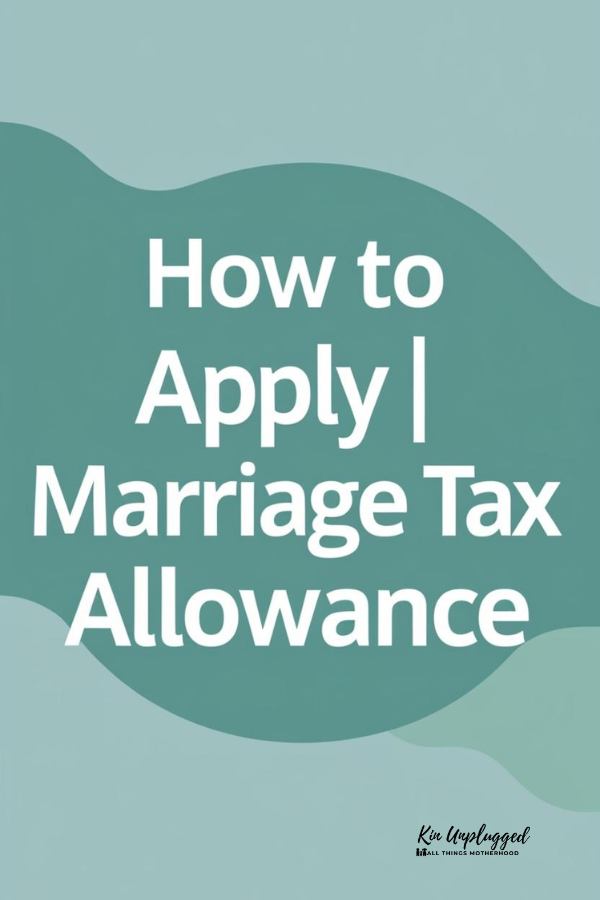
Applying for the Marriage Tax Allowance is a simple and straightforward process.
Step 1 – Check your eligibility
Before you apply, it’s important to make sure you’re eligible for the Marriage Tax Allowance. You can use the official eligibility checker on the government’s website to confirm if you qualify. Generally, you need to be married or in a civil partnership and your income must meet certain thresholds.
Step 2 – Apply
Once you’ve confirmed your eligibility, you can apply for marriage tax allowance online. Visit the official government website or consult a tax advisor if you’re unsure about the process. Applying online is the quickest way to get started and you’ll receive confirmation once your application is processed.
Step 3 – Provide the required information
When you’re applying, you’ll need to provide certain details to verify your application. You might need to provide
your National Insurance numbers (yours and your spouse’s)
your personal income details and
your spouse’s personal income details.
Make sure that you have all of this information on hand to complete your application quickly and accurately.
Step 4 – What happens next
After you submit your application, HMRC will process your request. It typically takes up to 5 weeks to receive confirmation of your application. Once approved, the tax allowance will be transferred and your tax code will be updated. If you’re transferring tax allowance to your spouse, they will benefit from the reduced tax rate, meaning they’ll pay less tax moving forward.
Common questions about Marriage Tax Allowance
Marriage Tax Allowance is a great way to save on taxes but you might have some questions about how it works.

Can unmarried couples apply?
Unfortunately, unmarried couples or those who aren’t in a civil partnership do not qualify for the Marriage Tax Allowance. The allowance is specifically designed for married couples and civil partners so to benefit from transferring tax allowance to a spouse, you must be legally married or in a civil partnership.
What happens if my income changes?
If your income changes after you’ve applied for marriage tax allowance, it could impact your eligibility or the amount you’re entitled to. For example, if your income rises above the personal allowance threshold, you may no longer qualify for the allowance. It’s important to notify HMRC if your income changes so that your tax code can be updated accordingly. If your spouse’s income changes, that could also affect the allowance transfer.
How do I update my allowance if my situation changes?
If your personal situation changes. For example, if you change jobs, get a pay raise or your marital status changes, you’ll need to inform HMRC. You can easily update your Marriage Tax Allowance details by contacting HMRC directly. If you’re transferring tax allowance to your spouse and there are any changes to your circumstances, you may need to update the application or submit a new one.
If you’re ever unsure, it’s always a good idea to consult with a tax advisor to make sure your application remains accurate and up to date.
3 Tips for maximizing your tax savings
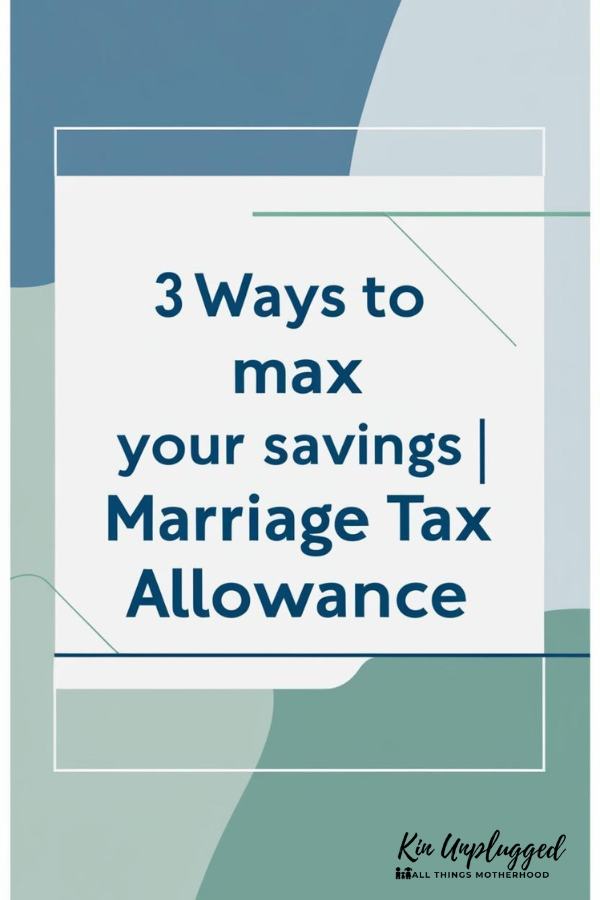
The Marriage Tax Allowance is a great way for eligible couples to reduce their tax bill but are you making the most of it?
1. Backdate your claim for bigger savings
Did you know you can claim up to four years of missed allowances? If you haven’t applied yet, you could receive a lump sum refund worth hundreds of pounds. Don’t leave money on the table. Backdating your claim ensures you get the full benefit.
2. Adjust your claim if your income changes
If you or your partner’s income changes, your eligibility for the Marriage Tax Allowance might too. Make sure to update your claim to reflect your current earnings so you don’t miss out on extra savings.
3. Combine with other tax benefits
The Marriage Tax Allowance can be used alongside other tax benefits (like the Child Tax Credit) to further reduce your household’s financial burden. Understanding how these benefits work together can help maximize your overall tax savings.
What to do if your claim is rejected
So, you applied for the Marriage Tax Allowance hoping for some extra savings only to find out your claim was rejected. Frustrating, right? Don’t worry! Here’s what could have gone wrong and how to fix it.
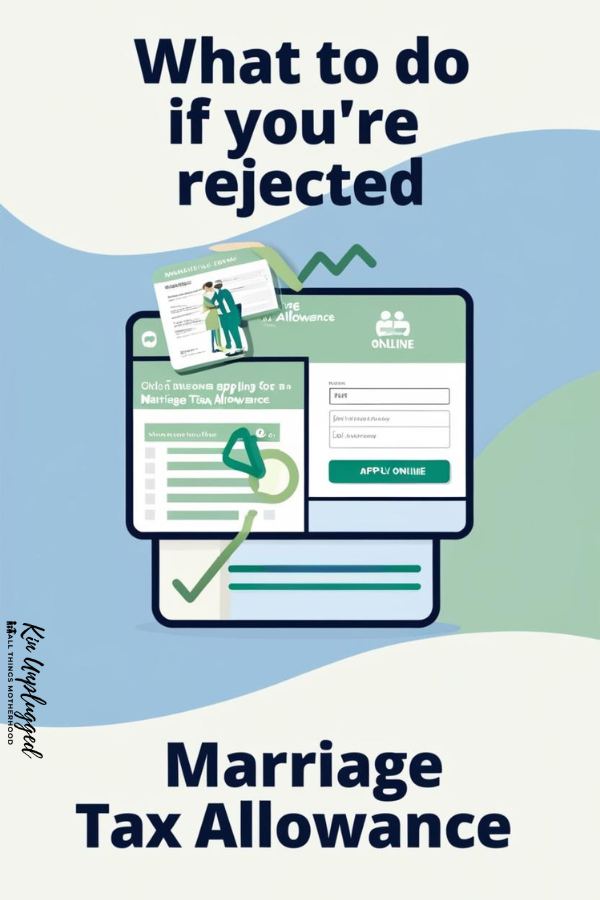
Common reasons for rejection
Income eligibility issues. If your income or your partner’s income isn’t within the required limits, your claim won’t go through.
Incorrect details. A small mistake, like a wrong National Insurance number or missing information, can lead to rejection.
Your partner didn’t confirm the transfer. The Marriage Tax Allowance requires both partners to agree so if your spouse didn’t complete their part, the claim won’t be processed.
How to appeal or fix errors
If your claim was rejected, don’t panic. You can appeal or correct the issue.
Double-check your details. A quick review of your application could reveal a small error that’s easy to fix.
Redo your application. If there was a mistake, you can resubmit your claim with the correct information.
Use a Marriage Allowance check. If you’re unsure about eligibility, an online marriage allowance check like this one can confirm whether you qualify before applying again.
Contact HMRC. If everything looks correct but you’re still having trouble, please contact HMRC for help.
A rejected claim isn’t the end of the road. You just need to find the issue and correct it. Take a few minutes to review your details and you’ll be on your way to claiming those savings.
In conclusion…
If you’re eligible for the Marriage Tax Allowance, there’s no reason to leave money on the table. It’s a simple process that could save you hundreds of pounds each year. That’s money that could go towards family expenses, a fun treat or even just easing the cost of everyday living. The majority of us need just that right now.

